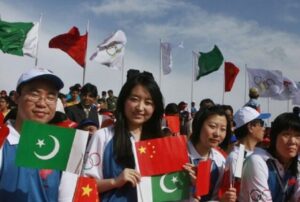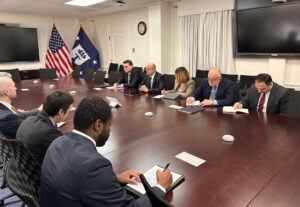The Alaska Summit: Power in the Sky, Uncertainty at the Table

The Putin–Trump meeting at the Elmendorf-Richardson military base in Alaska entered history not so much for its diplomatic content as for the symbolic messages it conveyed. After nearly three hours of negotiations, the two leaders appeared before the cameras. While Trump described the summit as “productive,” he tempered expectations by stressing that “no agreement has yet been reached.” Putin, in turn, referred several times to “understandings,” though without providing any details. As a result, the concrete outcomes of the summit were limited, while its symbolic significance proved far stronger.
America’s Show of Force
The most memorable moment of the summit came not from the official statements but from the spectacle in the skies. American F-35 and F-22 fighter jets, along with the strategic B-2 “stealth” bomber, flew at low altitude directly over the runway where the two leaders were present. This maneuver was interpreted not merely as a demonstration of advanced military technology but also as a direct and unambiguous signal to the Kremlin.
Washington appeared to declare: “The United States’ deterrent power is always present at the table, prepared for any contingency.” According to analysts, even in the absence of diplomatic progress, this gesture was designed to strengthen America’s psychological position, reinforce its leverage at the negotiating table, and remind the international community of its strategic superiority.
Putin’s Response: “Next Time in Moscow”
In response to Washington’s show of force, Putin issued a striking remark: “Next time in Moscow.” These words were more than a diplomatic invitation; they carried the weight of a challenge. The Kremlin’s message was clear: should Washington accept the invitation and hold the next summit in Moscow, Russia would be prepared to stage its own display of military might.
A Reference to the U.S.–Soviet Rivalry
The symbolic messages of the summit were not limited to aerial displays. Signs evoking the historical polarization and rivalry between the Soviet Union and the United States also attracted attention. Notably, Russian Foreign Minister Sergey Lavrov attended the meeting wearing a T-shirt emblazoned with the letters “USSR” in bold print—an unmistakable nod from the past to the present.
This sartorial choice underlined that the memory of the Cold War remains vivid in the Kremlin’s political consciousness and that today’s power struggles trace their roots back to that era. Experts argue that Lavrov’s symbolic attire communicated Moscow’s assertion that “we remain heirs to that rivalry, a global actor,” thereby serving as a historical counterweight to Washington’s display in the skies.
Ultimately, the Alaska Summit entered history as a meeting that produced few tangible results at the negotiating table but was saturated with symbolic meaning in the skies and through gestures. A pressing new question has already emerged: what kind of power display will the world witness in the skies over Moscow and in the spectacle staged by the Kremlin?

